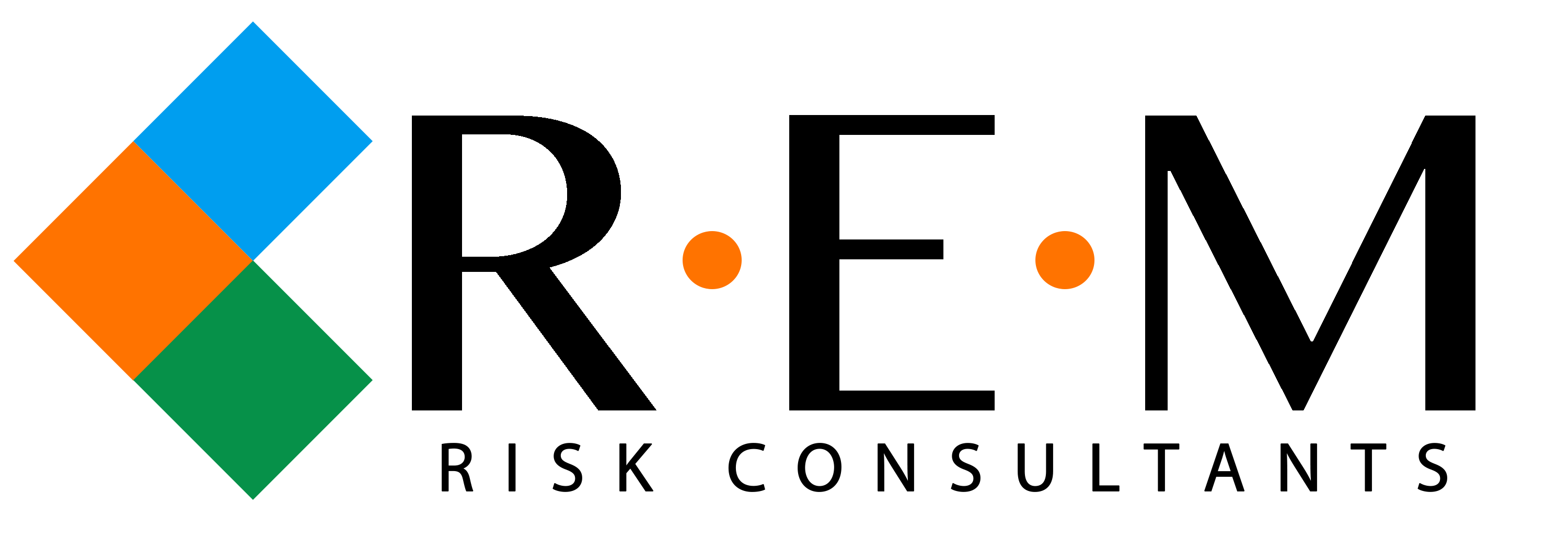Michael Larrañaga, PE, CIH, FAIHA
President and Managing Principal
Michael is a fire, risk, and process safety professional with over 20 years of experience. Michael has carried his passion to a variety of sectors, including petrochemical, pipeline transportation, energy, academics, healthcare, pharmaceutical, consulting, chemical manufacturing, government, research, mining, smelting, construction, and semiconductor; He has worked in the United States, Canada, Europe, Mexico, South America, and China. Michael has served on the Board of Scientific Counselors for the National Institute for Occupational Safety and Health and as a member of the Department of Homeland Security First Responders Advisory Group.
Michael has led a corporate-wide Risk-Based Process Safety and Risk Management Plan assessment for all of global semi-conductor’s sites worldwide. Michael served as an investigator at an explosion at a propellant and primary explosive manufacturing complex, investigating all fire-safety and human systems related to the incident and served as the lead human factors investigator of a catastrophic crane collapse and resulting fire in a nuclear power plant. Michael led a two-year investigation of the BP/Macondo well blowout to identify human factors that contributed to the incident.
Michael completed the first ever risk-based network analysis of the U.S. crude oil pipeline infrastructure, which identified Probable Maximum Loss Risk (PML-Risk) associated with various failures within the pipeline network.
Michael was previously Professor and Department Head of the School of Fire Protection and Safety at Oklahoma State University where he taught courses and conducted research in Fire Dynamics, Fire Suppression and Detection Systems, Fire Safety Hazard Recognition, Fire Investigation, Process Safety, Inspection-Testing-Maintenance of Fire Protection Systems, and Homeland Security. Michael is a Certified Industrial Hygienist, Certified Safety Professional, Certified Fire and Explosion Investigator, and Professional Engineer.
- PhD, Industrial Engineering – Human Factors, Texas Tech University Health Science Center
- MA, Security Studies – National Security Affairs, United Sates Naval Postgraduate School
- MS, Environmental Science, University of Houston Clear Lake
- BS, Engineering Technology – Fire Protection and Safety, Oklahoma State University
- Editor-In-Chief Journal of Occupational and Environmental Hygiene
- World Trade Center (WTC) Health Program Science/Technical Advisory Committee of the Centers for Disease Control and Prevention
- Founding Director and Treasurer of the School Shooting Research Foundation
- Corporate Executive Development Program, Southern Methodist University
- CIH, Certified Industrial Hygienist, #8277, Board for Global EHS Credentialing
- CSP, Certified Safety Professional, #16679, Board of Certified Safety Professionals
- PE, Registered Professional Engineer: Texas #96821, Arkansas #15725
- CFEI, Certified Fire and Explosion Investigator, #14256-7304, National Assn. of Fire Investigators
- ISO 45001:2018 Lead Auditor (TPECS)
News
- Michael Larrañaga Named New Editor-In-Chief for the Journal of Occupational and Environmental Hygiene
- Larrañaga Named to 9/11 Medical Advisory Committee
- The American Board of Industrial Hygiene: 60 years of progress
- R.E.M. Presents Roadmap for Climate Security
- We Invite you to Help Fund the Pat Brock Endowed Professorship
- R.E.M. Is Pioneering the Field of Climate Security
- Insight Risk, LLC is now DBA R.E.M.
- Michael Larranaga Testifies Before Federal Judge
- Judge Asks for Crash Course in the Science of PFAS Chemicals
- REM to Attend the Paris Air Show
- Insight Risk Awarded Contract to Conduct Cal Poly Wildfire Risk Assessment
- Michael Larrañaga Named Founding Director of School Shooting Research Foundation
- Michael Larranaga’s NPS-CHDS Team Advances to Phase II of the USCG #ReadyforRescue Challenge
- Michael Larrañaga Completes the NPS Advanced Thinking in Homeland Security Initiative (HSx)
- Michael Larranaga Appointed by DHS
- Insight Risk Launches!
Select Publications
Craig B., Parker T., Wang Q., Larrañaga M.D. (2021). Indoor chlorine gas release in a natatorium: A case study. Journal of Occupational and Environmental Hygiene, 18(12), 533-540.
Smith, P., Benjamin, C., Kristina, H., Michael, L., (2021). ‘Analyzing the national fire incident reporting system to identify carbon monoxide incidents in the U.S. lodging industry’ Preventive Medicine Reports.
Larranaga, M.D., Smith P., (2020). ‘Theoretical underpinnings of homeland security technology’, in Ramsay, M.D. (ed.) Theoretical Foundations of Homeland Security: Strategies, Operations, and Structures. Routledge.
Smith, Patrick K., et al. “Human error analysis of the Montara well blowout.” Process Safety Progress (2020): e12182.
Comiskey, John and Michael Larrañaga. “Climate Security: A Premortem Approach to a Sustainable Global Future.” Homeland Security Affairs 15, Article 8 (December, 2019). www.hsaj.org/articles/15605
Holder, H. W., Larrañaga, M. D., Smith, P.K., Stacy, E.A., Krismer, M., (2015). Calculating Dew-Point Design for DOAS. ASHRAE Journal, 57(12), 24-32.
Smith, P. K., Bennett, J. M., Darken, R. P., Lewis, T. G., & Larrañaga, M. D. (2014). Network–based risk assessment of the US crude pipeline infrastructure. International Journal of Critical Infrastructures, 10(1), 67-80.
- Smith, P., Kincannon, H., Lehnert, R., Wang, Q., & D Larrañaga, M. (2013). Human error analysis of the Macondo well blowout. Process Safety Progress,32(2), 217-221.

Michael Larrañaga, PE, CIH, FAIHA
President and Managing Principal
Michael is a fire, risk, and process safety professional with over 20 years of experience. Michael has carried his passion to a variety of sectors, including petrochemical, pipeline transportation, energy, academics, healthcare, pharmaceutical, consulting, chemical manufacturing, government, research, mining, smelting, construction, and semiconductor; He has worked in the United States, Canada, Europe, Mexico, South America, and China. Michael has served on the Board of Scientific Counselors for the National Institute for Occupational Safety and Health and as a member of the Department of Homeland Security First Responders Advisory Group.
Michael has led a corporate-wide Risk-Based Process Safety and Risk Management Plan assessment for all of global semi-conductor’s sites worldwide. Michael served as an investigator at an explosion at a propellant and primary explosive manufacturing complex, investigating all fire-safety and human systems related to the incident and served as the lead human factors investigator of a catastrophic crane collapse and resulting fire in a nuclear power plant. Michael led a two-year investigation of the BP/Macondo well blowout to identify human factors that contributed to the incident.
Michael completed the first ever risk-based network analysis of the U.S. crude oil pipeline infrastructure, which identified Probable Maximum Loss Risk (PML-Risk) associated with various failures within the pipeline network.
Michael was previously Professor and Department Head of the School of Fire Protection and Safety at Oklahoma State University where he taught courses and conducted research in Fire Dynamics, Fire Suppression and Detection Systems, Fire Safety Hazard Recognition, Fire Investigation, Process Safety, Inspection-Testing-Maintenance of Fire Protection Systems, and Homeland Security. Michael is a Certified Industrial Hygienist, Certified Safety Professional, Certified Fire and Explosion Investigator, and Professional Engineer.
- PhD, Industrial Engineering – Human Factors, Texas Tech University Health Science Center
- MA, Security Studies – National Security Affairs, United Sates Naval Postgraduate School
- MS, Environmental Science, University of Houston Clear Lake
- BS, Engineering Technology – Fire Protection and Safety, Oklahoma State University
- Editor-In-Chief Journal of Occupational and Environmental Hygiene
- World Trade Center (WTC) Health Program Science/Technical Advisory Committee of the Centers for Disease Control and Prevention
- Founding Director and Treasurer of the School Shooting Research Foundation
- Corporate Executive Development Program, Southern Methodist University
- CIH, Certified Industrial Hygienist, #8277, Board for Global EHS Credentialing
- CSP, Certified Safety Professional, #16679, Board of Certified Safety Professionals
- PE, Registered Professional Engineer: Texas #96821, Arkansas #15725
- CFEI, Certified Fire and Explosion Investigator, #14256-7304, National Assn. of Fire Investigators
- ISO 45001:2018 Lead Auditor (TPECS)
News
- Michael Larrañaga Named New Editor-In-Chief for the Journal of Occupational and Environmental Hygiene
- Larrañaga Named to 9/11 Medical Advisory Committee
- The American Board of Industrial Hygiene: 60 years of progress
- R.E.M. Presents Roadmap for Climate Security
- We Invite you to Help Fund the Pat Brock Endowed Professorship
- R.E.M. Is Pioneering the Field of Climate Security
- Insight Risk, LLC is now DBA R.E.M.
- Michael Larranaga Testifies Before Federal Judge
- Judge Asks for Crash Course in the Science of PFAS Chemicals
- REM to Attend the Paris Air Show
- Insight Risk Awarded Contract to Conduct Cal Poly Wildfire Risk Assessment
- Michael Larrañaga Named Founding Director of School Shooting Research Foundation
- Michael Larranaga’s NPS-CHDS Team Advances to Phase II of the USCG #ReadyforRescue Challenge
- Michael Larrañaga Completes the NPS Advanced Thinking in Homeland Security Initiative (HSx)
- Michael Larranaga Appointed by DHS
- Insight Risk Launches!
Select Publications
Craig B., Parker T., Wang Q., Larrañaga M.D. (2021). Indoor chlorine gas release in a natatorium: A case study. Journal of Occupational and Environmental Hygiene, 18(12), 533-540.
Smith, P., Benjamin, C., Kristina, H., Michael, L., (2021). ‘Analyzing the national fire incident reporting system to identify carbon monoxide incidents in the U.S. lodging industry’ Preventive Medicine Reports.
Larranaga, M.D., Smith P., (2020). ‘Theoretical underpinnings of homeland security technology’, in Ramsay, M.D. (ed.) Theoretical Foundations of Homeland Security: Strategies, Operations, and Structures. Routledge.
Smith, Patrick K., et al. “Human error analysis of the Montara well blowout.” Process Safety Progress (2020): e12182.
Comiskey, John and Michael Larrañaga. “Climate Security: A Premortem Approach to a Sustainable Global Future.” Homeland Security Affairs 15, Article 8 (December, 2019). www.hsaj.org/articles/15605
Holder, H. W., Larrañaga, M. D., Smith, P.K., Stacy, E.A., Krismer, M., (2015). Calculating Dew-Point Design for DOAS. ASHRAE Journal, 57(12), 24-32.
Smith, P. K., Bennett, J. M., Darken, R. P., Lewis, T. G., & Larrañaga, M. D. (2014). Network–based risk assessment of the US crude pipeline infrastructure. International Journal of Critical Infrastructures, 10(1), 67-80.
- Smith, P., Kincannon, H., Lehnert, R., Wang, Q., & D Larrañaga, M. (2013). Human error analysis of the Macondo well blowout. Process Safety Progress,32(2), 217-221.

